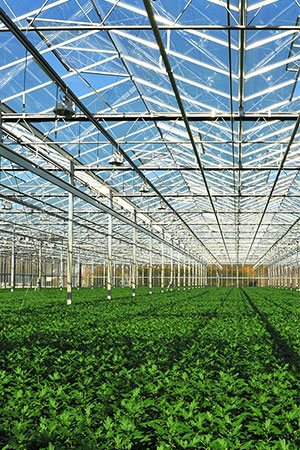Deakin researchers call for regional rethink
Research news
Given the population explosion predicted for Melbourne, its time for smarter use of Regional Victoria, claim Deakin experts.
Melbourne’s population is predicted to double from four million to around eight million by 2050, outstripping Sydney by 2030.
Yet Deakin experts claim that Regional Victoria has been largely left out of the planning equation – with regional areas only expected to grow from 1.4 million to 2.2 million by 2050.
Associate Professor Victor Sposito, an expert in strategic spatial planning, and his colleagues at Deakin University’s Centre for Regional and Rural Futures (CeRRF), are calling on Victorian planners and policy makers to lead debate about future development of the state.
“Are we going to be leaders or laggards in the needed community debate about the future of all Victoria (not only of Melbourne)?” he has asked his colleagues at the Planning Institute of Australia.
He is also calling for a Strategic Spatial Development Framework to be created for Regional Victoria. Emanating out of Europe, the concept of strategic spatial planning has become one of the most successful approaches to large scale spatial planning around the world. It focusses on balancing regional development and the physical organisation of space according to an overall strategy, accounting for economic, social, cultural and ecological drivers.
Developing Regional Victoria will be crucial, Associate Prof Sposito argues, if Melbourne is to minimise the development problems of a mega city, such as sprawling urban growth, traffic gridlocks, and social problems like crime, unemployment and poverty.
“State and local governments, planners, industry groups and communities need to work together so we can shape a better future,” he said.
“Victoria is a compact state, where the major regional centres of Geelong, Bendigo, Ballarat and Traralgon, and other important towns, are only 60-120 minutes from Melbourne, and have good public transport, especially rail, and natural resources.
"Nine out of ten people in this state live within 150 kilometres of Melbourne’s CBD.”
He noted that the predicted population growth will mean that nearly 2.5 million additional jobs will need to be created in Victoria over the next 30 years, “but the question is, in what industries and where are the jobs going to be?”
“Urban Melbourne is living on the resources of country Victoria.
"In fact, Regional Victoria is the main food and fibre production and exporting territory for the nation. Our research suggests that at least 30 to 40 per cent of population growth should be in the country.”
As one of Australia’s leading urban planners, Associate Prof Sposito is more than qualified to argue his case. With experience in South America, Europe and the USA, he has worked at the highest levels of planning in Victoria, alongside three former premiers, and on landmark projects such as the National Tennis Centre, Southbank, two metropolitan strategies in Melbourne, and a number of Regional Victorian strategies.
He believes that smarter use of regional resources is the key to improving regional jobs growth, but the issue is complicated by a future affected by climate change, disruptive technologies, evolving markets and resource constraints.
To better prepare for the future, he and his CeRRF colleagues are undertaking large scale planning projects for local councils, catchment management authorities and Regional Development Victoria, in areas such as Goulburn Broken, Central Highlands and Gippsland.
The team has developed a methodology for achieving smarter use of land and water. Using soil and land information and climate change projections, they have built models that identify, commodity by commodity, the most suitable areas, now and into the future.
A key factor in their approach concerns recognising that, in addition to producing food and fibre, regional land produces non-commodity goods and services. Recreation, social care, protecting biodiversity and climate change mitigation are all important assets of regional environments.
“With a multifunctional approach and exploiting our science knowledge base, we could achieve employment five to 10 times higher in Regional Victoria,” he said.
“As one example, instead of simply growing flaxseed in South West Victoria and employing around five people, a farming family has built a factory that allows them to produce flour, oil and biofuel – and they are now employing over 30.”
Share this story

Key Fact
Researchers at Deakin University’s Centre for Regional and Rural Futures have developed a methodology for achieving smarter use of land and water.
